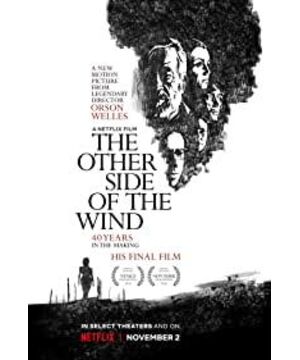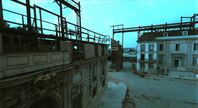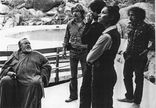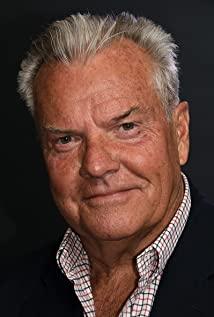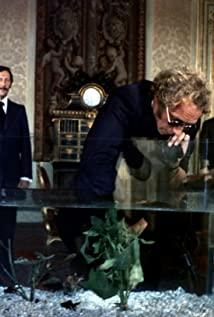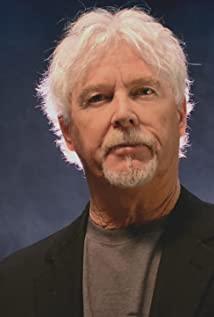Following the first film review from three days ago, the author will then gradually analyze the audio-visual language and structure of each paragraph. Today, I will focus on the analysis of the main film (that is, the shooting of the steam nude girl scene in the bath) to about 20 minutes before the Hannaford birthday party scene. content around.
The first shot at the opening of the main film, the scene of the nude girl in the bathing bath that starts to enter immediately after the board is played, is connected to many subsequent scenes through a telephone line in Aojia Kodak's hand , such as sitting full of fakes. The so-called "naked woman" compartment of the female model, when Oja Koda was driving a convertible, she received a microphone voice from another convertible in Hannaford. The setting of the dummy model in this film is quite ingenious (the author will mention it in many analyses later), and in fact it also reflects the repeatedly emphasized and ubiquitous concept of image crystals in this film, that is, the mutual contrast between the two poles. Mapping each other - so it seems that the so-called silent "dummy" in the carriage naturally corresponds to those in the so-called bathing scene in the scenes who repeatedly shake the big nipples and the buttocks laughing and playful" The "real-life" nude girl is matched with the snapping sound of the fan's body; at the same time, corresponding to a series of close-up shots of the "real-life" nude girl, there are a large number of frontal shots or close-up shots of the face, especially the eyes, when facing the camera backwards. The movement-image of the cross-editing of the two series of shots highlights the "observation" perception of the Aojia Koda lens group relative to the nude female lens group, which makes these shots isolated from each other in time, opposite and organically unified; The close-up of Aojia Kodak's eyes can also represent the direct interaction between the photographer/camera and the object to be photographed, and can also play a role in the so-called "object personification" of the camera mentioned in the previous film review, and even make the camera "object personification". The functions and roles of the photographer/camera and Aojia Kodak are potentially transformed into each other(With regard to the so-called further series of "time-image" language analysis, due to the limited space of this series of film reviews, the author has no intention to repeatedly discuss or verify the corresponding theories of Deleuze or others; , as an unfinished work completed more than ten years before the two volumes of Deleuze's film, as a material and a sub-shot editing design, Wells' status as the first giant in film history is in ambition and achievement compared to "The Other Side of the Wind". It is fully reflected in the works, genius and intuition go hand in hand with future philosophical rationality. Such control of images and amazing abstract thinking ability are rare in the history of film art, so that the artistic height of "Wind" can even make all the traditional six majors in the past. The best masterpieces in art are ashamed) .
The scene of the film in the film is over, and a group of push-pull shots are used to shoot the montage of everyone leaving the studio, which is quite classical school style. From here, the so-called "reality" layer belonging to the film officially surfaced (the specific hierarchy will be analyzed in detail later), The vast majority of the video material after that is the so-called "pseudo-recording" style or technique that makes people misunderstand its function, but in fact, many of the settings in this film, as mentioned above, are purely for the purpose of highlighting the "other side" and "this". The concept of crystal coexistence, contrast and interaction (and a variety of complex crystals of multiple types) is almost unique in the development of film history in the past century. In the unfinished paper " Film Creation as the Future of Visual Art (4) " written in the past, the author tried to explore whether the so-called "potential of film" exists and where it exists if it exists. In "The Wind is on the Other Side", Wells seems to have given us a certain enlightenment and answer that resonates with Deleuze's theory later, that is to break and connect different time and space/matter/through various channels and techniques The limitation of objects, linking "this side" and "the other side" of cinema through various types of connections, is exactly what Godard said in "The History of Cinema" such as "the real cinema is the unseen cinema" and " Film is neither technology nor art, but a mystery" theory, that is, to tap the potential of today's film, it is necessary to liberate film from the so-called "flat" superficial system structure and prejudice, and make film to Vertical depth develops, getting rid of Newtonian "absolute time" and ideal cognition floating on the senses (and where does the flattening of film come from? Always placed in the category of low-level descending art, ordering the film to only follow or even parody other art crowds follow) .
Take a look at exactly how Wells did it: for the first time ever , every person (or personification) involved from the creation of the film to the completion involved, thus completing the faceted prism or crystal —all the crew and actors on set staff, editors, film agency distributors, camera reporters, media reporters, film students, fans/admirers, biographers/critics, make-up artists, assistant directors, and even those who branch out from the "reality" layer in a later stage. The communication between the producer and the investor... Wait, the characters in the later films will be more and more complex, and this complexity is more reflected in the extremely complex and intersecting interactions between the various characters as multi-faceted prisms/crystals (the whole film). Almost always in the "reality" layer), this cross-interaction is arguably far more complex than the interaction reflected in any artistic genre in the past, due to the high degree of integration of the camera with many aspects/characters and the complete anthropomorphism of the camera (which was not possible in any other art of the past because they had no camera, not to mention the camera's independent angulation and autonomous anthropomorphism) . As for the interaction of such complex characters/prisms, with the verbal communication under the logic of various plausible texts, the mysterious content underlying (or above) the surface of the image slowly begins to emerge in many ways—until On Hannaford's convertible, a set of "pseudo-recorded" interview material taken in 1970, the sound engineer of First Time and Space turned on the recording equipment and extended the microphone to the camera, along with the footage cut out immediately. "Mr. Hannaford, is the camera's perspective reflecting reality? Or is reality reflecting the camera's perspective?" to directly point out the core of what this film wants to explore and express, namely the prism crystal and time crystal images. The shot first cuts to an interview with the actors in 1970, and then immediately cuts to this set of scenes in another time and space that will be reshot a few years later. Hannaford is driving in another time and space with his back to the camera and a cigar in his hand. the lens...
In the end, the time crystal image formed another true audio-visual logic cycle with John Dale riding a motorcycle on the dark highway to the side of Aojia Koda. At this time, the producer was not unexpectedly affected by the investor. Question: No script? Representing the Newtonian pseudo-scientific time theory that requires so-called "absolute precision", whether in movies or in reality for many years, once again prevailed, thus summarizing everything in the first 23 minutes of the film; then Olga Koda Ignoring the doll presented by John Dale and continuing to walk into the depths of the night, John Dale entered a new round of chasing, and the producer only got the back of the investor's "wasting time".
(To be continued)
2018.11.15 Self-determination
View more about The Other Side of the Wind reviews


